Topic Tactics: Gear Care
Gear malfunctions. We’ve all had them; it’s part of spending time out in the field. At some point, hunters, backpackers, and anyone spending time outdoors have to deal with a broken piece of equipment. Magically, these moments often seem to happen when we’re 10-plus miles in the backcountry or at a camp that’s a three-hour drive to the nearest town.
It takes just one instance on a single trip to drive home the importance of caring for one’s gear. When the sun is setting in the backcountry and an early-season snowstorm is moving in, it’s easy to appreciate the value of a sturdy tent and the warmth of a quality sleeping bag.
But what happens when that tent isn’t waterproof, or the loft of your sleeping bag has mysteriously vanished?
A bit of preparation and gear care before you leave home can save you from a long night shivering in a damp tent—and possibly dangerous consequences. Taking a bit of time to unpack, clean, and stow your gear properly between weekend hunts can keep you safe and comfortable in the field. Here are a few things to put on your checklist this season:
Camping Gear, Clothing, and More
One of the most important things you can do for your gear is also the most simple: let it dry in between uses. Putting away a damp tent, pair of boots, or set of waders is a sure recipe for mold and degradation of the material. (Not to mention, some serious funk.) Even if you were not out in the rain, morning dew can account for a surprising amount of dampness. Take the time to set your gear out and let it dry thoroughly before storing.
Sleeping Bag 101
A quality sleeping bag is an investment, and on a cold night following a long day, you’ll be glad you spent the money. Whether your bag is down or synthetic, how you store it will play a large factor in both the longevity and function of your bag. Flip the bag inside out and let it air out after every trip, then store it uncompressed—the worst thing you can do for your sleeping bag is to keep it compressed for a long period of time. The interior filling will compress, leading to a lack of loft and warmth. Store it loose; hang the bag in a dry location or store it in a large, loose breathable bag (many modern sleeping bags come with a storage sack expressly for this purpose). Loose storage will allow the bag to stay fluffy and warm.
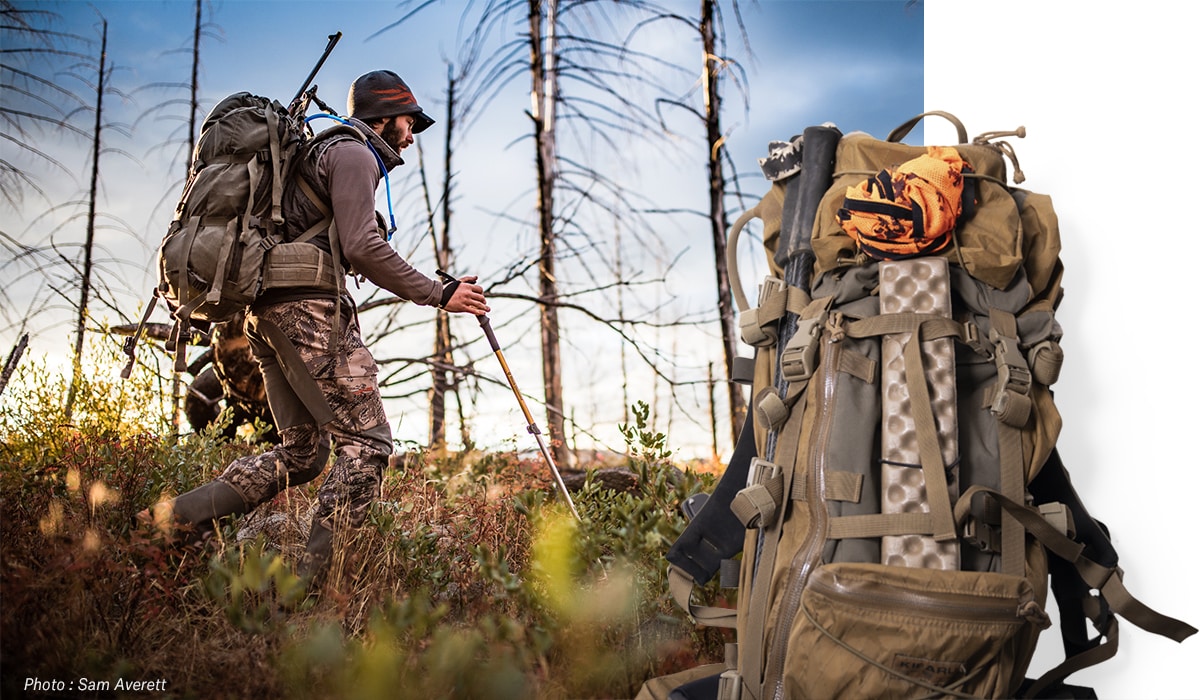
Boot Care
Most hunters have a favorite pair of boots. We have a keen appreciation for the process of finding the right pair of boots and then investing the time to break them in. A quality pair of boots is expensive, but is also equipment that will be with us for many years to come. Basic boot care is fairly straightforward, but often overlooked aspect of seasonal prep.
Always ensure you let both the interior and the exterior of your boots dry out in between trips. Leather boots benefit from periodic treatment with a leather conditioner (be careful to not condition too frequently, as this will weaken the fibers of the leather). Cordura and synthetic boots can be scrubbed clean with a stiff brush. Boots without a waterproof GORE-TEX lining will benefit from a waterproofing spray at the beginning of every season. Dealing with a smell situation? Try sprinkling baking soda into the boot, let it sit overnight, and shake it out in the morning.
Weatherproofing Tents, Packs, and More
Modern waterproofing technology is a wonderful thing. Many tents, backpack rain covers, and more are crafted of waterproof materials (most often nylon or polyester, coated with silicone in the factory to make the fabric waterproof) and will continue shedding water for many years with little or no maintenance.
But once your waterproof gear has seen many seasons or a plethora of miles, it’s time to re-treat it. Many brands offer re-proofing solutions, which can be painted on, washed in, or even sprayed on. Pay attention to the manufacturer’s recommendations and re-proof accordingly at the first sign of seepage.
Carry a Field Repair Kit
Things break. It’s a fact of life. But broken gear in the backcountry can carry far more serious repercussions than it does back in town. Carry a few repair basics with you in the field; a mini-kit doesn’t need to make up much room, but will be important when you or your hunting buddies are dealing with broken tent poles, a ripped rain shell, and more.
Make sure you have a knife or a multitool in your pack. Wind a length of duct tape around a pencil so you don’t have to carry the entire roll. Add in a needle and waxed thread, along with a few zip-ties. The list of potential repair items should be tailored to each person and their individual kit, but a few items tossed in a baggie can save a trip when the time for field repairs comes.
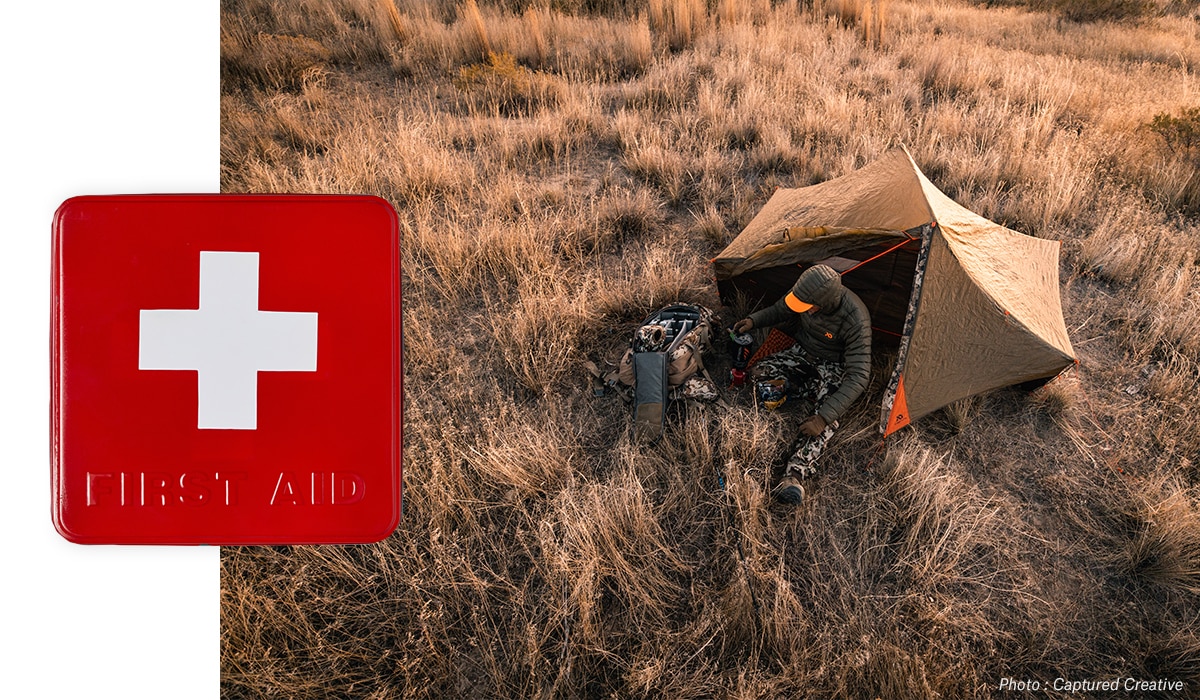
Keep Your Medical Kit Up-to-Date
All too often a medical kit isn’t on the packing list. That’s a mistake.
A compact medical kit with basic supplies won’t take up much room, but should absolutely be in your pack. And while your kit can—and should—be tailored to individual skills, preferences, and activities, one universal truth is the need to ensure the kit is always updated before the season begins. Before the hunting season or your first trip of the year, unpack your medical kit. Take note of what’s missing and should be replaced, and what medications or ointments may have expired. Replace what you need to, and restore the kit to full capacity. When the time comes and you need something from it for yourself or your hunting buddies, you’ll be glad you invested the effort.
Hunt-Specific Gear
The most vital piece of hunt-specific gear is your weapon. No matter what your weapon of choice is, dirt and moisture will wreak havoc on it. But beyond a thorough wipe-down of your rifle, shotgun, or bow, there are a couple of essential tasks for maintaining your weapons.
For firearms, clean your guns after you shoot them. Whether you spent a day on the range or took a single shot while hunting, break out the gun cleaning kit appropriate for your firearm and clean the bore, chamber, and wipe down the exterior with a rust-preventive solvent. Remember: there are different brushes for different calibers, so make sure you’re using the right size for your gun.
Rifle Care
Here are four quick tips to make sure you’re driving tacks:
- Be careful when transporting your gun, and use a hard case when possible. A little bump to the scope can mean the difference between a bullet hitting the sweet spot, or sailing three feet over your target.
- It’s important to clean out the barrel of your gun. Carbon, lead, and debris can find a home in your grooves, eventually degrading the performance of your rifle.
- Check your rings and bases. When setting up your rifle and optics, be sure to use blue Loctite and torque the screws to spec on your rings and bases. Rattling around in a truck or even just the normal jostling while walking to your stand can start backing out screws. This could mean a change in impact of a few inches to feet.
- Many people never think to remove the barrel of their rifle. A lot of gunk can end up on the bottom side of the action and, by removing a bolt or two, you can easily clean and re-lubricate the area.
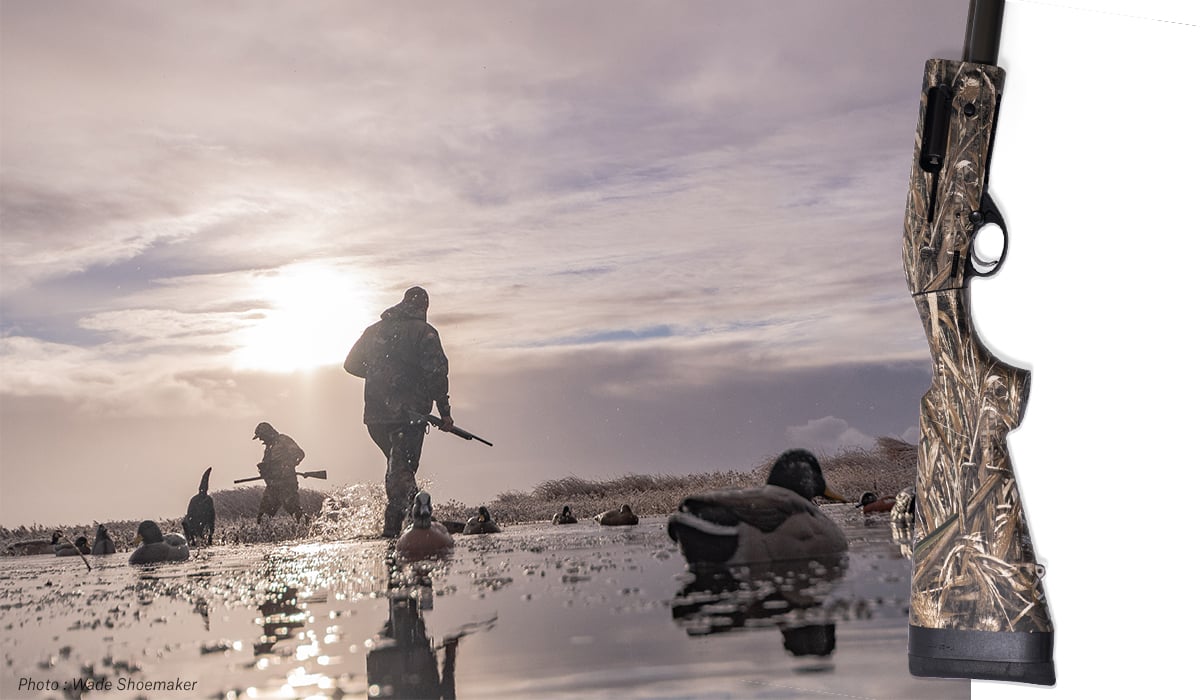
Shotgun Care
For waterfowl hunters, shotgun care is imperative. Waterfowlers are arguably the hardest on their gear, simply by the conditions. Wiping dry and then air-drying is the minimum you should do to keep your shotgun lasting for years. Wiping down with a rust-preventive solvent is always a good idea.
Many people wipe down the outside of their shotgun, clean the barrel, and call it good. Whether you are shooting a gas, inertia, or pump-driven gun, there are a lot of moving parts underneath the surface that also need a little TLC. At least once a year (or if your workhorse gets a bath in the local slough) you will want to take out the trigger assembly, forend parts, and bolt assembly to wipe them down and add lubrication. A word of warning: a little lubrication goes a long way. While hosing down old reliable with a whole can of Hoppes might seem like a good idea, it can create a slurry of gunpowder of carbon, gunpowder, and dirt, making cycling shells more difficult.
Bow Care
For bows, use bowstring wax at least once a month when you’re not using the bow and after every shooting session pre-season and in-season. The wax protects the strings from fraying. Additionally, check for issues with delamination of bow limbs. Bows are under pressure all the time and leaving them in a hot car or in direct sunlight for long periods of time can cause the laminate to divide into layers. Checking for delamination is as simple as running a cotton ball up and down the limbs to see if it catches on very small snags.
Nothing is worse than staring down at your bow in utter shock, string loose and limbs far from parallel. Having your bow string come off the cams means an instant trip to the nearest bow shop. Essentially, your morning hunt is over. A small twig getting caught between your cam and string is all it takes to derail the string. Get in the habit of keeping an eye on your cams to make sure nothing is obstructing their path when practicing to ensure everything is on track.
Arrow Care
If you’ve ever seen gruesome pictures online of a splintered arrow impaled into a hunter’s hand, then you know arrow care is of utmost importance. A small nick on a carbon arrow can mean structural failure and, when put under the force of a bow, can spell disaster. After each shot, it’s a good idea to grab the arrow at each end and flex it at least four inches away from your body while visibly and audibly checking for splinters, cracks, or nicks. If you’ve missed the target and send an arrow sailing into the dirt, it’s a good idea to flex it four to five times, turning the shaft in between flexes, to ensure it’s still safe to shoot. It’s easy to get into a routine of flexing your arrows after each practice round while you’re walking back from the target.
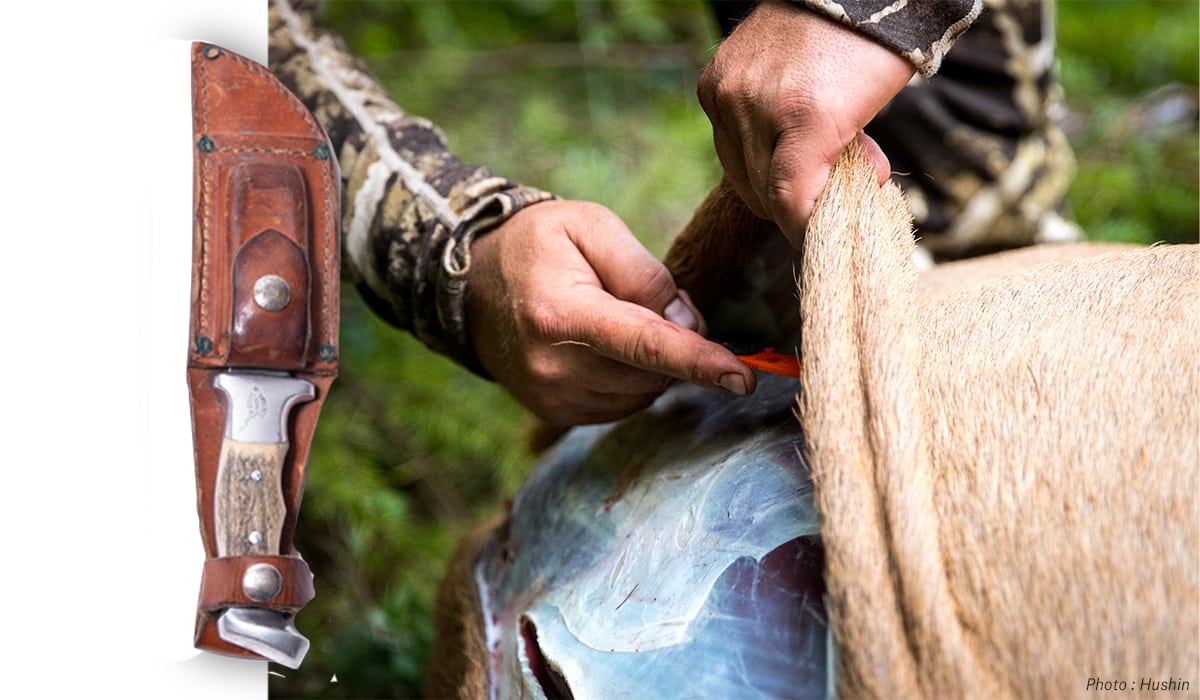
Knife Care
One of the most dangerous (and frustrating) things on a hunt is a dull knife. It’s easy to throw a compact knife sharpener in your pack to ensure you’re always able to have a sharp blade. Replaceable razor blade type knives are becoming more popular for good reason. They are surgically sharp and when they start getting dull, you can switch out for another one.
After you’re done with the hunt and still in the field, try to get as much blood, fat, and meat off your knife as possible. After the remnants of your harvest dry on a knife, it makes getting it off much more difficult. By throwing a pack of wet wipes into a Ziploc bag, you can get a lot of the gunk off your knife. When you get home, wash knives in hot soapy water, air dry, and then run them on a good stone to get a sturdy and sharp edge. It’s also important to use a sheath, both to keep your blade sharp and to protect you from getting stabbed while in the field.
Harness Care
Your safety harness is a literal lifesaver. While they are built to be tough as nails, it’s still important to make sure the harness remains in working order. One of the most important things is to visually inspect the straps for fraying and discoloration. The area where the buckles meet the webbing is a more common area to spot frays, and if that’s the case, it’s time for a new one. Many hunters wash their clothes religiously in non-scented soap, spray their boots down with scent killer, and use expensive ozone generating units to gain even the slightest advantage against deer. What we often overlook is all the scent that’s absorbed into your safety harness. Read the washing instructions on your particular harness to see if it’s washer and dryer safe. Otherwise soaking it in a bucket of warm water with unscented soap and hang drying is an easy way to clean your harness.
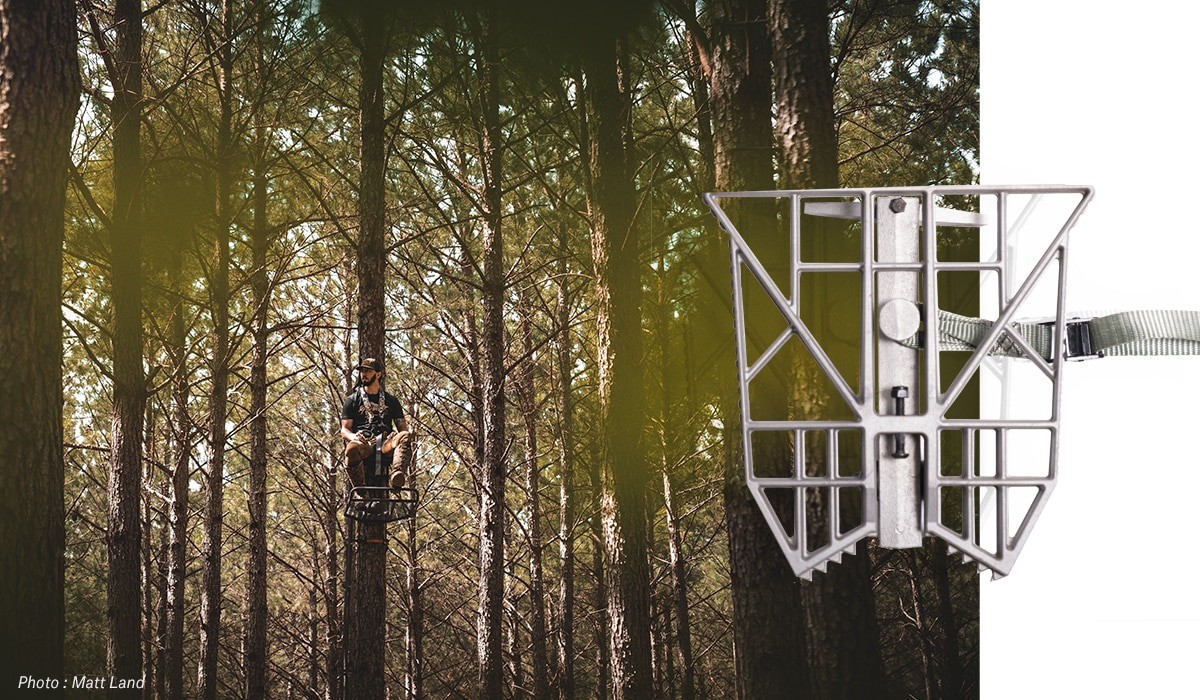
Blind Care
Ground blinds take a lot of abuse. Many hunters leave their ground blinds up for the entire season, and months of rain, snow, wind, and UV rays from the sun can take a toll on your blind. All quality blinds come with stakes for each of the four corners as well as rope to anchor the hubs, so they don’t fold in. After the season, take down your blind, and spray it down with a garden hose, removing insects, and dirt. Always make sure your ground blind is dry before storing it over the off-season so it doesn’t mold or mildew.
Tree Stand Care
Tree stands are one of the most effective ways to hunt deer. It’s important to ensure the stand is safe before you trust it, considering you can be as high as 20 feet up a tree. When climbing into a stand, visually inspect the straps and the treestand itself, looking for wear, broken welds, or other oddities. After every season, check the straps for signs of wear. Rodents and squirrels love chewing on tree stand straps, and even routine exposure to the sun can weaken them. Taking stands and climbing sticks down after every season also prevents them from tightening up as the tree grows. It’s crucial to wear a safety harness while in the stand, and a lineman’s rope while climbing into it.
Optics Care
Keeping your optics clean is vital to a successful hunt. By doing a few things, you can make sure there is nothing to stop you from getting your quarry into the crosshair. Using scope and bino caps is an easy way to prevent them from getting scratched while going to and from the stand or making a stalk. Attaching a microfiber cloth to your bino harness or pack makes it easy to quickly wipe dust or water off your glass.
One mistake you hear year after year is a guy who goes from a warm truck or cabin right into the woods with their rifle. This spells trouble for your scope. Warm air is able to hold more moisture, and when you instantly go from warm to cold, your glass is going to fog up! No matter how much wiping you do, it will continue until the scope and air temperature reach equilibrium. To combat this problem, let your rifle temper to ambient conditions before you go out into the field.
Dog Care
Dogs are really man’s best friend when it comes to bird hunters and waterfowlers. It’s important to keep them in fighting shape so they can maintain peak performance. The first thing you need is a proper first-aid kit, equipped with a skin stapler, antibacterial ointment, gauze, eye wash, quick clot, and forceps, among other things. If you don’t want to go through the hassle of putting together a kit of your own, Gundog Supply has pre-built kits with everything you need to keep your dog in the game.
One of the most common reasons your dog could end up on the injured reserve list is because it’s out of shape. You wouldn’t expect to go run a marathon after sitting around on the couch, drinking beer, and eating pizza all summer. The same goes for your dog, but thankfully dogs are able to be whipped into shape much faster than humans.
Lastly, it’s always recommended to have a local vet’s phone number in case a serious accident occurs. In many of the areas hunters frequent, amenities are few and far between, and cell service can be spotty. So having the number ready to go in case of an emergency can save crucial minutes.